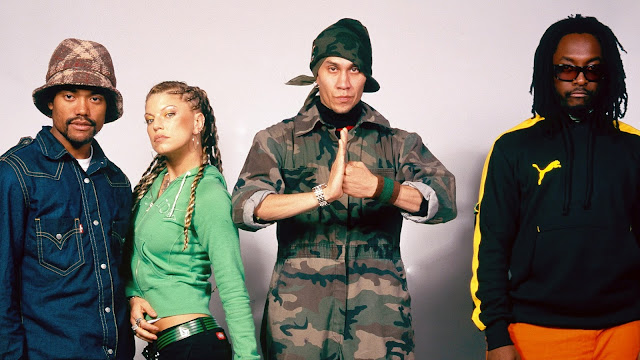A Stroll down of Cuban Music
A Stroll Down of Cuban Music
Music History & Heritage
The genre started back in the 16th century, Cuban music includes many instruments, performances, and dance composers influence by west African and European music. According to Wikipedia, "Since the 19th century Cuban music has been hugely popular and influential throughout the world. It has been perhaps the most popular form of regional music since the introduction of recording technology. Cuban music has contributed to the development of a wide variety of genre and musical styles around the globe, most notably in Latin America, the Caribbean, West Africa and Europe. Examples include rhumba, Afro-Cuban jazz, salsa, soukous, many West African re-adaptations of Afro-Cuban music (Orchestra Baobab, Africando), Spanish fusion genres (notably with flamenco), and a wide variety of genres in Latin America."
The music heritage in the Caribbean island of Cuba is rich. Due to the rich diversity of its people, the mixture of indigenous people, Spanish settlers, and African Slaves that were transported across the Atlantic gives a unique voice around the world. There is much different Cuban music, but the majority of the music that is used is Clave.
Güiro - a smaller hollowed out gourd with grooves along its edge. The güiro player scrapes the guiro with a small stick.
Claves - a pair of small thick wooden sticks that are struck together to produce a clear, piercing tone that needs to be heard by the rest of the band.
Catá - a piece of hollowed out tree that’s struck with sticks to produce a soft woody clicking sound.
Bells - cowbells of varying
sizes. Different sized bells are used in different styles of music. In
chachachá, for example, the cowbell is small and has a very high pitch, whereas
in abakua, the cowbell used (called “ekon”) is larger and lower pitched.
Timbales - perhaps the only Cuban percussion instrument
that doesn’t have a direct link to Africa. Timbales are a pair of metal
(usually steel or brass) single headed drums that have a high pitched cutting
tone and are played with long, thin wooden sticks. Like the bongos, the
timbales consist of a macho and an hembra drum. The timbalero (timbales player)
most commonly plays the shell of the drum and usually plays the drum heads
during fills or solos.
Guitar - 6
stringed instrument common in Spain. Spanish guitars use a combination of steel
and nylon strings, unlike modern acoustic guitars which usually use steel
strings.
Tres - a 3
stringed guitar-like instrument common in son music. The tres player plays a
pattern called a montuno, a syncopated melodic phrase that outlines both the
clave and the harmonic structure of the piece.
Trumpet - a brass
instrument common in European musical styles. 5. Trombone - another common
European brass instrument.
Double bass - a common European stringed instrument. In
Cuban music, the bassist plays a pattern called a tumbao, which anticipates the
harmony of the following bar by playing on beat 4, the beat before the chord
change.
Piano - in more modern Cuban music, the piano takes a similar role to the tres by playing montunos.
Lastly,
according to Liberty Park Music, Clave is another instrument described as
"First we’ll discuss the clave as a physical instrument. As mentioned
above, claves are short, thick wooden sticks that are struck together to
produce a sharp, piercing sound that penetrates the rest of the band."
Music Element and Personal Opinion
Represent Cuba - Dirty Dancing Havana Nights
The Music Element for "Represent Cuba" is one of my favorite songs after I watched "Dirty Dancing: Havana Nights". The song is rich with Cuban music that can be easily danced to. The Beat of the song is steady, not too fast or slow throughout the song. The song has a mix of English and Spanish that is sung through the song. With the music instruments described above, if I hear them correctly the bango, Guiro and Timbales are played.
In my personal
opinion, Cuban Music one of my many favorite genres is international music. The
texture of the music has so many instruments playing at the same time with a
decent beat. I enjoyed writing up this blog since it had so many instruments
being part of the music, and how the lyrics are spot on played in the music.












First off, I had no idea the amount of instruments Cuban music has to deal with! It seems like there's almost a symphony of instruments, even with a lot of the being similar in sound or usage. I do agree with you that Cuban music has a very nice rythmn, great for dancing. I would've liked a little bit more on the background of the actual music itself and how it plays into society, but overall very informative!
ReplyDeleteI also enjoy Cuban music and one of the reasons is because you can dance to it. I really enjoyed reading about all the different kinds of instruments used in Cuban music and it something I have never really thought about before. It was also a really nice touch to be able to have pictures to along with the different instruments.
ReplyDeleteThere are so many instruments involved in Cuban music! My grandpa owned some bongos as well as a shekere, which I didn't know at the time was the name of it. I would have liked to learn more about they genres of Cuban music. I do agree, the amount of instruments played throughout cuban songs makes it very enjoyable!
ReplyDeleteIlich, T. (n.d.). What Is the Origin of Cuban Music? Retrieved November 02, 2020, from https://www.liveabout.com/the-history-of-cuban-music-2141525 Here is a wonderful article that gives a little more history of Cuban music and the genres.